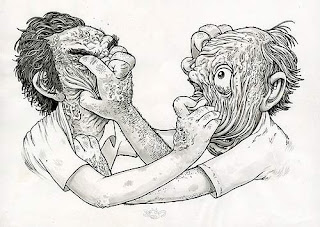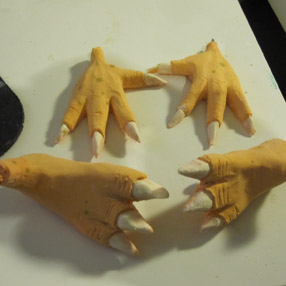Popular Posts
-
Just a collection of shot from today's progress on the full-body armature/puppet, have to leave it mid-foaming up for tonight....
-
Well, here it is, the final completed film! If you go to Vimeo , you can watch it in HD. Thank-you to everyone who helped in one wa...
-
I first stumbled across this character designer and comic artist when I was given a free book by accident from a book shop. I'm sure gla...
-
Initial layers of standard latex used to build up the detail areas such as eyelids etc Colouring the latex: a good glug of water, plenty of...
-
Looking at a few references of laboratories and mad scientists (very much the movie-versions) And so I've started to add details to ...

























































